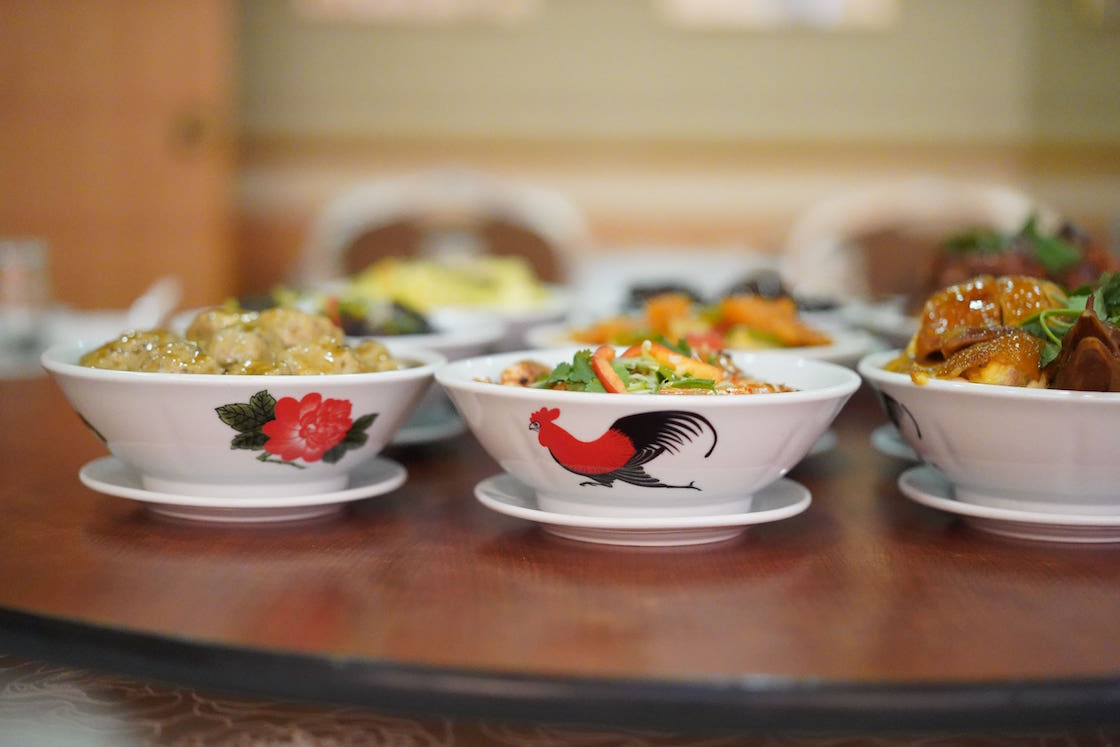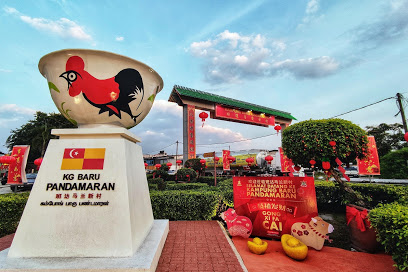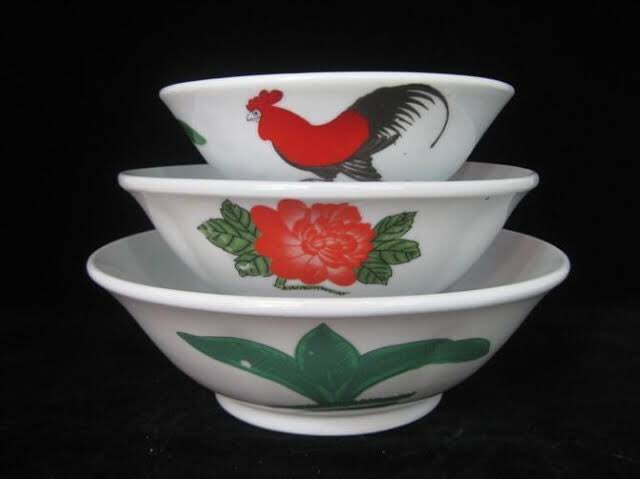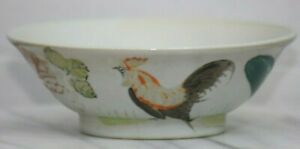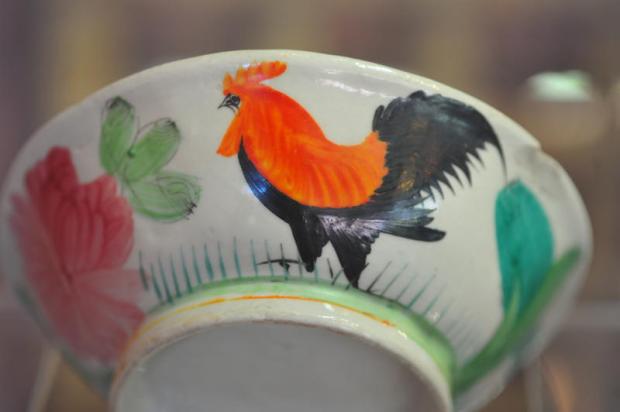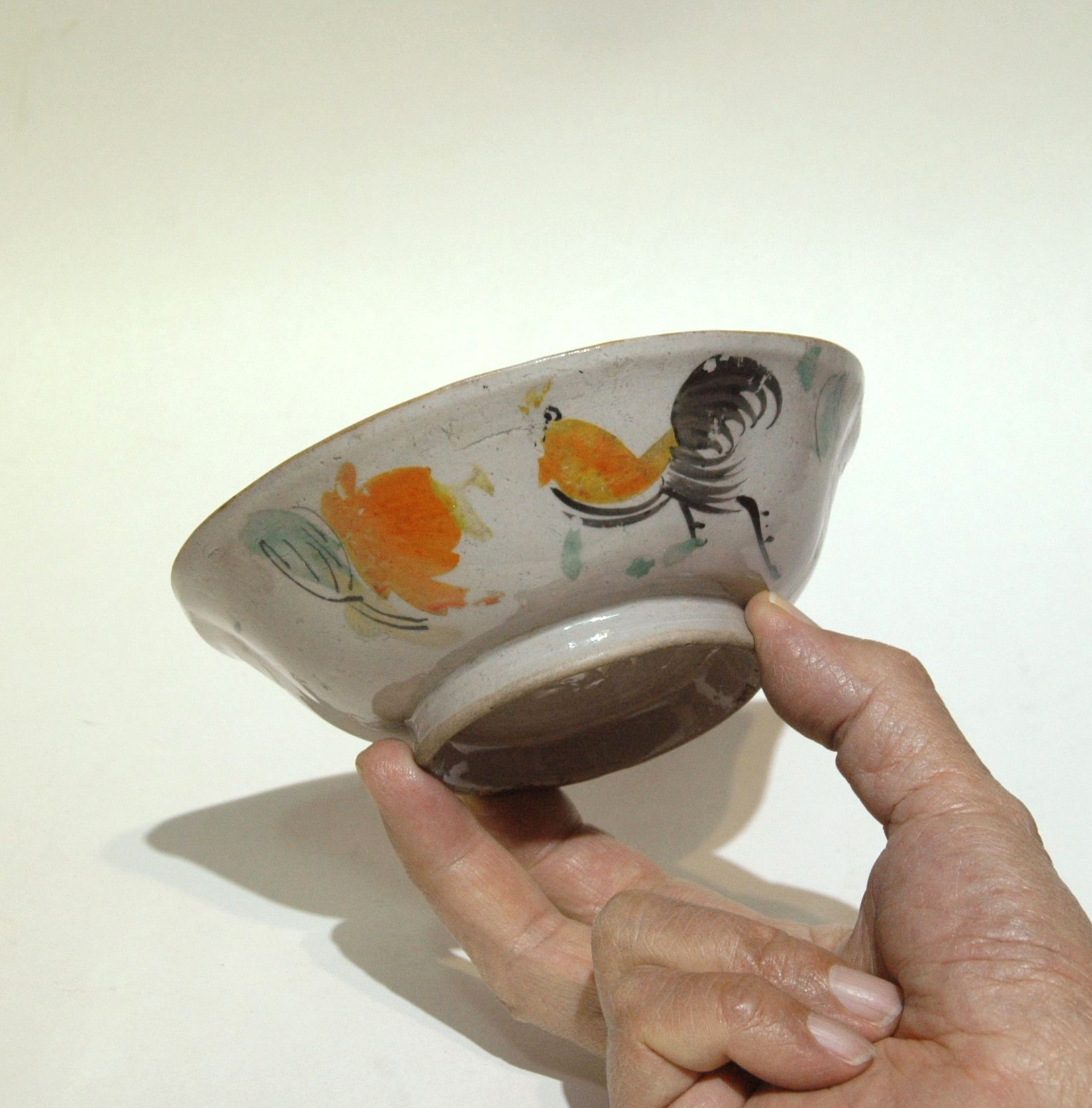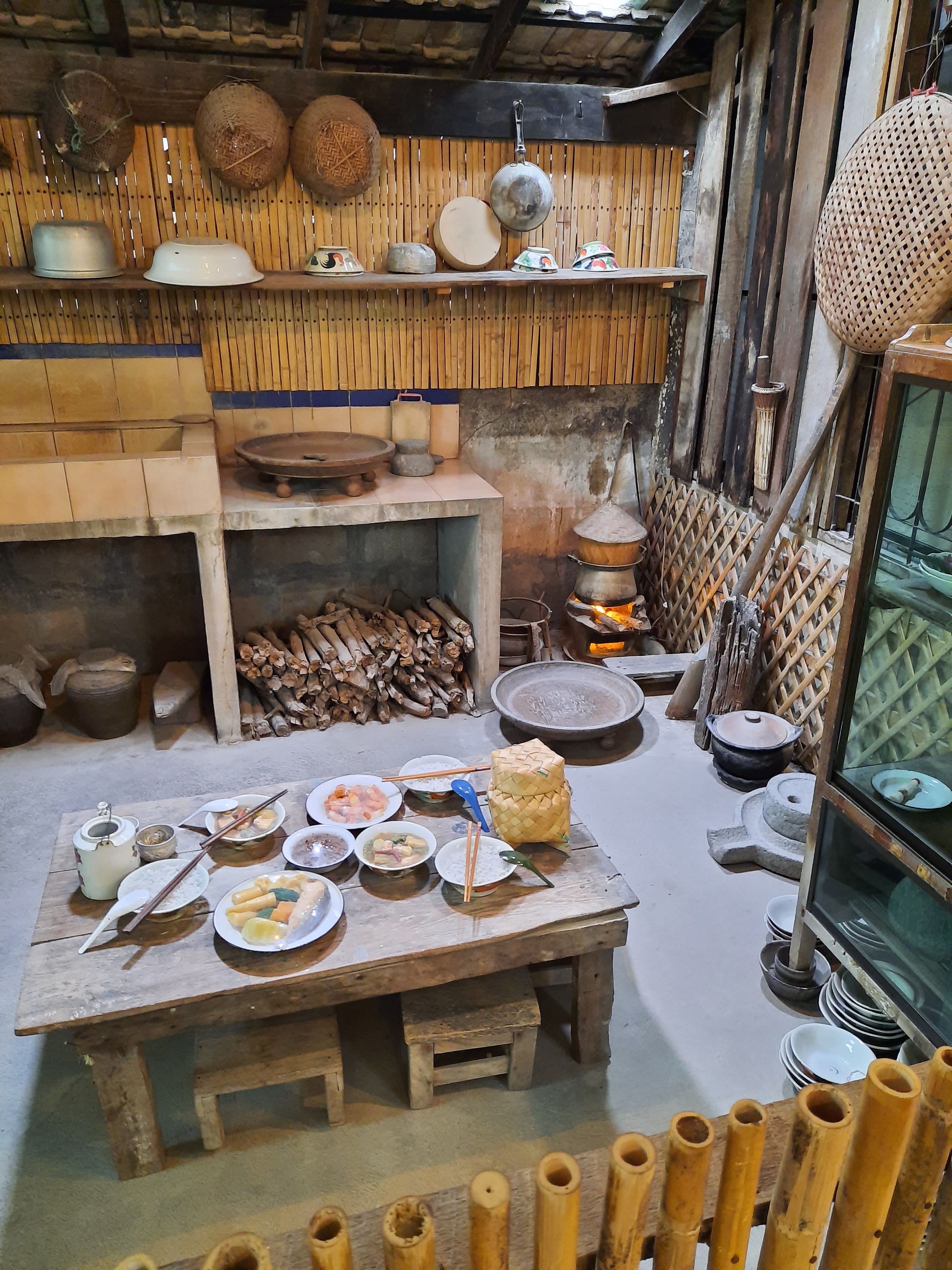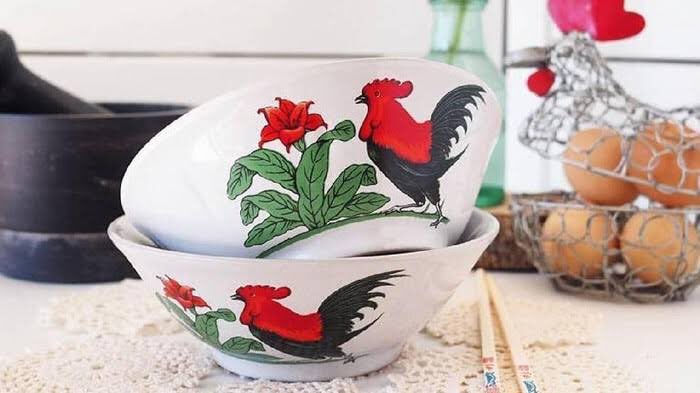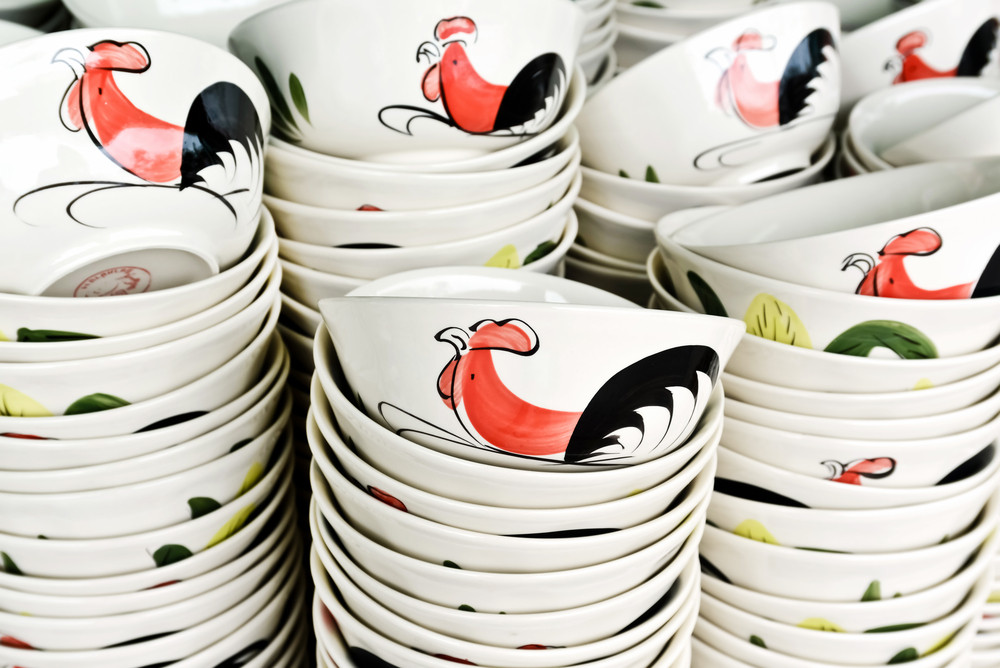Here's Why This Iconic Rooster Bowl In Your Kitchen Might Be A Priceless Collector's Item
Not your average ‘cock-and-bowl’ story.
If you grew up in Malaysia, you might recall using this nostalgic rooster bowl in Chinese restaurants, or even at your grandparents' dinner table
This famous porcelain bowl is often used to serve rice and noodle dishes at many Chinese eateries, such as bak kut teh stalls, hawker centres, and kopitiams. It is known by different names like 'ji gong wan' (鸡公碗), 'gong ji wan' (公鸡碗), and 'ji jiao wan' (鸡角碗).
Rooster bowls have so much sentimental value among locals that Pandamaran assemblyman, Tony Leong Tuck Chee, built a monument of a rooster bowl on a concrete pedestal in Port Klang
In January 2021, Leong erected the monument at Kampung Baru Pandaraman, Port Klang, as a tribute to the famous rooster bowls.
But... what's so special about this bowl?
To find out, let's first take a closer look at its design.
Rooster bowls are illustrated with three different motifs: a black-tailed rooster with a red neck, a red peony flower, and green banana leaves.
These bowls originated from the Guangdong Province of South China more than a century ago, and were made by Hakka craftsmen who individually hand-moulded and hand-painted them. Thus, the original ones are one-of-a-kind, and each has small differences in size and patterns.
Like most Chinese decorative pieces, each motif has a particular significance
According to CultureGuru, '鸡' (chicken) in Hokkien has a similar pronunciation as '家' (home/family). People believed that when they eat from a rooster bowl, they are wishing for prosperity in their family. Hence, the rooster motif signifies the meaning of hard work, a fighting spirit, and a flourishing family.
Why a rooster and not a hen? Well, this was because the patriarchal Chinese society back then favoured males over females, as bearing a son meant great blessings for a family. According to this Twitter user, Hakka parents would buy a rooster bowl for their son and engrave his name or a unique mark on it, which will remain in the ancestral hall until the owner's death.
Meanwhile, the peony flower represents the common Chinese saying '花开富贵', which literally translates as 'flowers blossoming with richness and prosperity'. Hence, the peonies mean prosperity, wealth, and high social status, whereas the banana leaves signify good fortune and luck.
In the olden days, the rooster bowl was commonly used by Chinese families who wished for a prosperous household
Back then, rooster bowls were widely used among the working class and families who resided in the countryside. As they were sold at very cheap prices, these bowls were an affordable alternative to the expensive upper-class bowls that bore phoenix and dragon designs.
Besides that, the authentic bowls were popular because they are thick, durable, and easy to eat out of, as they can be held in one hand with chopsticks in the other.
Traditionally, the Chinese emphasise the importance of eating together as a family and community. In Southern Min-speaking areas, most houseowners served their guests rice, soup, and even alcohol in these bowls as a way of wishing them prosperity and good fortune.
Additionally, the Cantonese included the rooster bowls in their dowry to signify blessings for the groom to have a smooth-sailing future. In the 1960s, rooster bowls were widely used in Hong Kong food stalls and food courts.
Although the Hakka community from Guangdong were the first to create the concept of rooster bowls, it was the Hakka community in Thailand who first manufactured them
After the Hakka community migrated to Southeast Asia, they continued their tradition of making rooster bowls. According to Bangkok Post, the first ceramic factory was opened in 1955 when Chin Simyu, a Chinese immigrant in Thailand, discovered large deposits of kaolin (China clay) in Lampang.
Since then, the rooster bowl has undergone many design variations. When they were first manufactured, the design was standardised to include the famous rooster, peony flower, and banana tree motifs. Rooster bowls can also be found in other Southeast Asian countries like Hong Kong, Korea, Japan, Vietnam, Malaysia, and Singapore.
Today, the mass production of rooster bowls has greatly reduced its value, and plastic imitations are made only for the sake of preserving the nostalgic design
It would be hard to find an authentic rooster bowl that the Chinese immigrants brought along when they first settled in Southeast Asia. Such porcelain bowls are regarded as rare collector items that were uniquely hand-painted by skilful artisans.
Currently, the art of making rooster bowls is still carried out in Lampang, the only province in Thailand that continues to make rooster bowls as souvenirs. According to VICE, a company in Indonesia has claimed the trademark of the rooster print in 2017, and anyone who produces, uses, or trades the rooster image will face up to five years behind bars, or fined IDR2 billion (approx RM576,255.80)!
Nevertheless, many Southeast Asians grew up using rooster bowls. Regardless of whether they are genuine or imitations, we still hold onto its sentimental value, passing on its legacy from generation to generation.
So if you do find an authentic rooster bowl in your grandparents' house, you should cherish and preserve it as a treasured family heirloom. For old times' sake.
